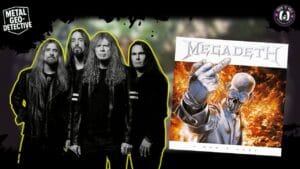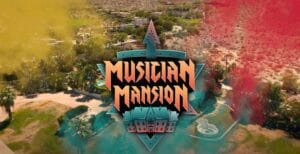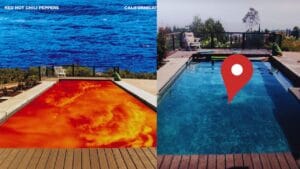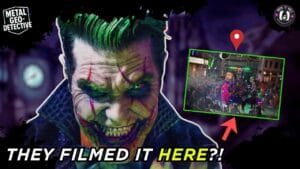Whitesnake Guitarists – The Ultimate Guide

After the great and unexpected success that David Coverdale experienced as the lead singer of Deep Purple from 1973 to 1976, with his already established voice and appearance, this Yorkshire native decided to start his own solo band called White Snake in 1977. Soon after releasing the first album, and during the preparations for the next one, Northwinds, at the end of 1978, Coverdale made another decision that would change his life and career forever. More or less the same group of people accepted this “repackaging” and recorded an album called Trouble in October 1978, which also officially marked the creation of the entity we now know simply as Whitesnake.
From almost the first day of the band’s existence, it became clear that Whitesnake was a true child of David Coverdale himself. One of the main characteristics of this group was the frequent change of musical personnel. With these changes, the sound also changed. Thus, from the initial club blues-rock and rhythm and blues, Whitesnake grew into one of the most influential hard rock bands in the history of rock music. Depending on the source and definition of membership acceptance, it can be roughly said that the group had around twenty different lineups to this day. No one, except for Coverdale himself, was guaranteed a safe place in the band, including the guitarists who represented an important driving force of the Whitesnake machinery, giving it universality, each in their own way, throughout all these years.
This is the ultimate guide list of all guitarists that played in Whitesnake through the years.

1.Micky Moody
If anyone on this list can be called the “original guitarist” of the group, it is certainly Micky Moody, who began working with Coverdale on the aforementioned pre-Whitesnake solo albums. With his appearance, he gave off the attitude of a withdrawn but mysterious man with a hat and mustache, while his playing ability, based mostly on classic blues-rock standards, contributed to defining the early Whitesnake sound. He participated in the work on several crucial albums of this era and contributed, both individually and collaboratively, to the creation of some of the best riffs and biggest hits of the group at the time, such as “Take Me With You,” “Fool For Your Loving,” “Ready An Willing,” and “Slow An Easy.” He left the band in 1983 after an argument with Coverdale, who, according to Moody, publicly embarrassed him in front of then-Thin Lizzy guitarist John Sykes. His last album with Whitesnake was Slide It In, and his solo parts can be heard on the English version of the album. He will also be remembered for his masterful slide guitar playing and we can say that he is one of the most underrated guitarists on the list, despite having been in the band even before its official start. After what happened with the group in the late 1980s, it was often thought that he actually paid the price for his modesty, as Coverdale’s plans were diametrically opposed to what Micky Moody was willing to offer.
2.Bernie Marsden
Bernie Marsden: The second original guitarist of Whitesnake joined the group in 1978 during the realization of the EP Snakebite. Bernie Marsden, even in his youth, did not give the impression of a rock star, but on the other hand, he had all the lethality of the “white snake” bites of the late seventies and early eighties in his fingers. He is the creator of one of the group’s greatest hits of all time, “Here I Go Again,” in collaboration with Coverdale, as well as the timeless riff in “Fool For Your Loving,” which probably defined the classic hard rock sound. While Micky Moody, with whom he formed the band’s first guitar duo, was more oriented towards blues, Bernie Marsden gave the group its other, perhaps even more important, hard rock element, with his powerful riffs and sharp solos. This can be best felt in songs like “Trouble,” “Young Blood,” “Walking In The Shadow Of The Blues,” and “Rough And Ready,” among others that he also co-wrote. He left the band in 1982 after recording the album Saints And Sinners. After that, he played in the group UFO and continued to collaborate with former bandmates like Moody, bassist Neil Murray, and guitarist Mel Gailey. At the beginning of this decade, he appeared as a guest at several Whitesnake shows, unlike his comrade Moody, which is proof that he remained on good terms with Coverdale after so many years.
3.Mel Galley
The guitarist Mel Galley arrives from the band Trapeze as a replacement for Marsden, as a man with very similar playing characteristics. Since the guitar parts on the album Saints and Sinners had already been completed, Galley was only able to contribute as one of the backing vocals on this record. He will have his “baptism of fire” two years later on the album Slide It In, on which he wrote music for the song “Gambler”, and co-wrote songs such as “Spit It Out” and “All or Nothing”. His guitar skills contributed to the fact that the band did not lose its distinctiveness even after Marsden’s departure, who was a very important member of the previous lineup. He remained in the band after Micky Moody’s departure, but soon after that, he suffered a hand injury that prevented him from performing with the band in 1984. New perspectives on the current music situation, new opportunities, and new challenges will lead Coverdale to soon dismiss him from the band. Mel Galley continued to pursue music in other groups after that. He died in 2008 as a result of esophageal cancer.
4.John Sykes
The new moments in the career of the band Whitesnake can be described in two words, or rather, a name – John Sykes! Impressed by his appearance, and above all his playing with the band Thin Lizzy, with whom John was performing at that time, David and his management made the move of the decade. By hiring this young and explosive guitarist, they brought the necessary freshness to the group, a new and more modern approach to playing, and opened the doors to much greater commercial success. John Sykes simply had all the necessary attributes that the band lacked on this dangerous new path. At the same time, he was a rock star and a true “guitar hero”. Already in his first performances, it became obvious that he was miles ahead of the other members of the band, who still nurtured that more modest, more “European” approach to music. On the other hand, America was eagerly awaiting the first real overseas bite of the “white snake”. It happened in 1984 when Geffen Records decided to push Slide It In into the American market, but only with the participation of the long-haired guitarist. Therefore, John Sykes recorded all the solo parts on the album, together with the bass line that was re-played by former bassist and returning member of the band, Neil Murray. However, that was not enough. In 1985 (and partly in 1984), Whitesnake performed as a quartet for the first time since the band was founded. John Sykes covered everything that needed to be covered, and the band itself became bigger and bigger in the eyes of fans around the world. Even Coverdale’s voice problems did not prevent Whitesnake from making an album in the period 1985-86 that would forever change the status of this group. Simply called Whitesnake 1987, it remains to this day the band’s greatest musical and commercial success. America finally fell! The bite of the “white snake” was unbearable. John Sykes, together with Coverdale, signed 9 out of 11 songs on that album, which is actually the entire album considering that those two were covers from an earlier period, and completely redefined the band’s sound, giving it the necessary modern note, or rather a more audacious and uncompromising style than ever before. The grandiose scream of the song “Still Of The Night”, the high-octane heavy riffs of the songs “Bad Boys” and “Children Of The Night”, are some of the best moments of the album, which otherwise did not have a single weak point. All this, among other things, thanks to the man with the black Gibson, which was mostly his guitar number one! Let’s not forget the ballad of all ballads, the synonym of “late 80s” bands – “Is This Love”, but also the frenzied “Give Me All Your Love”, “You Gonna Break My Heart”, etc. Even the cover of the song “Here I Go Again” surpassed the original, so you can still hear it in shopping malls, food store chains, and places like that today…
However, as usual, every fairy tale of this format has its negative ending. Whether Coverdale could not stand the wild Sykes, whose growing popularity threatened to overthrow the longtime king, or whether disobedience played the main role, remains unclear to this day. Ego struck ego, in any case. John Sykes never had the honor of playing his masterpiece live because he left the band in 1986. He continued his career with his group Blue Murder, with whom he performed songs from the aforementioned album, as both a singer and a guitarist at the same time.
5.Vivian Campbell
After disbanding the entire lineup that recorded the album in 1987, David Coverdale began the search for new band members. At the top of his list was guitarist Vivian Campbell, freshly ejected from the band Dio, where he had come into conflict with Ronnie James himself. Coverdale, on the other hand, in his own style, wasted no time and quickly hired the exceptionally talented young man from Northern Ireland. Vivian would appear in all of the group’s MTV videos of the time, but by 1988, he would leave the group, citing Coverdale’s attitude towards the other band members as the reason. In that year, he would play on the tour and record a solo for the single release of the song “Give Me All Your Love”. Despite being a member of two mega bands like Dio and Whitesnake, he will be remembered most for his role as the guitarist of Def Leppard, with whom he still performs and with whom he has produced numerous great songs throughout his career.
6.Adrian Vandenberg
The Flying Dutchman, as Coverdale called him, was probably the rightful successor to John Sykes, at least as far as the position of lead guitarist and main music writer was concerned. In fact, Adrian had been targeted by the band since the early eighties, when he was trying to make a breakthrough with his own band, Vandenberg. After a successful tour in 1987/88 and the MTV frenzy that surrounded the videos Whitesnake released at that time (thanks to Tawny Kitaen, of course), and then the re-recorded solos for “Here I Go Again”, it was time for Adrian Vandenberg to show his creative skills. He was on a similar guitar level as his predecessor Sykes, and in terms of appearance, totally in the current “hair/glam” style that the band was into. After Campbell’s departure, he remained the only guitarist in the band, which did not bother Coverdale at all, as long as Vandenberg delivered the riffs for “Judgement Day”, “Cheap n Nasty”, “Slip Of The Tongue”, “Wings Of The Storm”, or, for example, the epic and grandiose “Sailing Ships”, with his Peavey and Kramer strings, everything was just perfect. In the end, he signed all the songs on the album together with Coverdale, except for the cover of “Fool For Your Loving”. However, fate played with him at that time, and due to a hand injury, he had to leave the recording of his own creations to someone else.
Despite the fact that the album Slip Of The Tongue had almost identical commercial success as its predecessor, Whitesnake disappeared from the scene in the early nineties. Tired of everything, David Coverdale went into hiding. After a stint with Jimmy Page, the record company brought Whitesnake back on tour in 1994, which was accompanied by the release of the Greatest Hits compilation, and in a lineup that included Adrian Vandenberg. Changes in the music world and music trends in general, scars from his own life, and a very dark period influenced Coverdale to decide on a new album only in 1997. Restless Heart was the band’s ninth studio album on which Vandenberg once again got the position of lead guitar. This album marked a return to the band’s roots in rhythm and blues and a calmer approach to music, as a stark contrast to the period of debauchery from the late eighties. The album went almost unnoticed, despite producing high-quality songs such as “Restless Heart”, “Crying”, “Too Many Tears”, and others. Vandenberg once again showed the richness of his guitar talent, managing to do so in times that were totally non-rocking. From that period, the acoustic performances of the duo Coverdale/Vandenberg, immortalized in the famous Starkers In Tokyo concert in 1997, that remained remembered until today. At the end of the same year, the band went on a long hiatus again. In the early 2000s, and during the previous decade, Vandenberg would guest several times at the band’s concerts, mostly when the band was in the Netherlands. He maintained an excellent relationship with Coverdale over the years, and currently, a new Vandenberg group album is on hold.
7.Steve Vai
This guitar virtuoso from another planet, the king of six-string, seven-string, or guitars with two (or more) necks, after a successful stint with David Lee Roth, joined the band Whitesnake at the express request of Coverdale himself, at a time when the band was in the studio recording the album Slip Of The Tongue in 1989. Vandenberg was sidelined due to a hand injury, and Campbell had already left a year earlier, and studio time was already booked. Coverdale needed a quick solution. He didn’t want to delay the album. He wanted the best for his band. He wanted the best, and he got it!
So, Vai entered the picture totally unexpectedly, accepting a substantial offer that Whitesnake put on the table. However, the band’s sound had to pay a certain price. Legend has it that Vandenberg showed Vai what and how to play, but whenever he found himself alone, Vai would insert one of his unique fast guitar riffs. Therefore, the whole album is full of interjections, fast tappings, string bends, and relentless soloing. In any case, not something that fans were used to. The price was paid. Steve Vai left his mark. Many still think he overdid it, but there are also people who believe that he gave the band some new freshness and took it to a completely new level. Vai remained in the band until the very end, and in addition to recording the album, he will be remembered for the second generation of MTV videos, but also for the famous performance at Doninghton in 1990 when this lineup of the band also received its doctorship and went down in history.
8.Warren DeMartini
After the short-lived Coverdale-Page project, David tried again to “hide” from the public eye. However, the record label EMI/Geffen didn’t think so. They released the Greatest Hits compilation (which consisted exclusively of songs from the last three albums) and “ordered” a return to the scene in the form of a tour. For that occasion, in addition to Vandenberg, guitarist Warren DeMartini from Ratt, with whom he achieved fame in the mid-eighties, was also hired. Since the entire glam metal scene from the eighties was unfairly removed by the music industry in the early nineties, the same fate did not bypass even the best, such as the former multiplatinum band Ratt, and thus DeMartini was free to join Whitesnake. He spent less than a year in the group, mostly during the aforementioned tour. Few people even know that he played in Whitesnake, and besides live concerts, he didn’t leave any other mark on the band’s legacy.
9.Steve Farris
Whatever you may think of this guitarist from the band Mr. Mister, from which he actually came to Whitesnake in 1997, we must agree that he is the least known face among the others on this list. He spent about a year in the band, mostly on the tour that followed the Restless Heart album, and did not leave any musical mark. However, you can spot him in the video for the song “Don’t Fade Away” with a black Stratocaster in his hands and live concerts from 1997 tour
10.Doug Aldrich
The 90s were definitely a troubled time for Whitesnake. Coverdale tried to disappear several times, but was always pushed back into the spotlight, mostly by record labels. Every appearance lasted less than a year. Not to mention the marital and financial problems, which was also influenced by his ex-wife, resulting in darker music at the time. However, at the beginning of the new millennium, the end of all this was in sight. The solo album Into The Light was just a stopover for what was to come. David waited patiently for several years, like a true predator, and then chose 2003 (the year of the snake), to make a comeback. Before that, he lost all members of previous line-ups, and the first among equals on the list was the then guitarist of Dio, the blond American, Doug Aldrich.
Doug Aldrich has played in many bands during his career, such as Lion, Hurricane, Bad Moon Rising, and Burning Rain, and somehow he was always underrated as a guitar player. By style and appearance, he most resembled John Sykes, which Coverdale certanly recognized in him, and brought to the much-needed change to the newly formed Whitesnake, shaping a completely new musical style based on old blues-rock roots and infused with modern influences of the time. What he brought to the group can be easily compared to the moment when Sykes did the same thing in the mid-eighties. That is precisely why he became David’s right-hand man in the band.
However, new times brought new narratives, so unlike the seventies and eighties, Whitesnake worked much less on new music. Aldrich’s first works were only seen in 2006 on the live compilation “Live In The Shadow Of The Blues” in the form of the songs “Ready To Rock” and “Dog”. It was just laying the foundation for what was to be turned into the jubilee tenth album of the group, Good To Be Bad two years later, on which Aldrich (like Sykes and Vandenberg before) signed all the songs and released timeless modern blues-rock hits like “Best Years”, “Can You Hear The Wind Blow”, “All For Love” or “Good To Be Bad”. A new star was definitely born!
After that, the album “Forevermore” from 2011 followed, in which Doug Adlrich definitively left his mark in the history of Whitesnake’s music, and once again showed how great a musical talent he possesses. Riffs like those in songs like “Steel Your Heart Away”, “Love Will Set You Free” or “All Out Of Luck” represented the essence of almost the entire discography of the group. And what can we say about the epic “Forevermore”, which with its grandiosity dared to challenge even the legendary hits from the eighties.
However, as we have already mentioned, the musical narratives at the beginning of the 21st century were permanently changed. In the twelve years he spent in the group (from 2002 to 2014), Doug recorded only two mentioned albums, which seems to have greatly influenced his decision to leave Whitesnake in 2014. All in all, he will be remembered as one of the crucial guitarists in the Whitesnake legacy. Since then and to this day, he has been performing with the supergroup The Dead Daisies, and occasionally releasing albums with Revolution Saints (not anymore as he left the group) and Burning Rain.
11.Reb Beach
Reb Beach is one of the two guitarists currently employed by the group, who joined at the same time as Doug Aldrich in 2002 during the formation of the new millennial Whitesnake. He gained fame as a guitar wizard in his original band, Winger, which dominated the glam metal scene in the late eighties. He later tried his hand as a replacement for George Lynch in the band Dokken, which was of a very similar format and size.
Although he had a noticeable role on stage, sharing tasks with Doug, it was clear from the beginning that his position in the group was of a lower level, especially in terms of musical creativity. It was a strange decision by Coverdale to compose only with Aldrich. However, those who know the band’s history better know that Coverdale mostly collaborated musically with only one guitarist at the time (Sykes, Vandenberg), except during the Moody-Marsden period. The second guitarist, no matter how good he was, mostly served as support. Reb Beach had such a role until the release of the Purple album in 2015, on which he tried himself as an author for the first time, but not with his own music.
His first real opportunity came in 2019 with the release of the Flesh And Blood album. With this album, we got Reb’s first riffs and songs, namely “Good To See You Again”, “Shut Up And Kiss Me”, “Hey You”, “Get Up”, when it comes to rockers, while he composed the song “Sands Of Time” for the end of the album, which was supposed to be the true successor to songs like “Sailing Ships” or “Forevermore”. In other words, Reb had his chance to enter the legend of creating epic songs, about which we have already written! It seems that he succeeded in doing so. He put on his hat and took the left side of the stage, becoming the finally and deservedly, the first guitar of the band. Interestingly, since 2014, he has held the title of the longest-serving member of the group alongside Coverdale himself.
12.Joel Hoekstra
Another long-haired and blond guitarist, the fourth in line, joined the band as a replacement for Doug Aldrich in 2014. Prior to that, he performed in the bands Night Ranger and Trans Siberian Orchestra. David Coverdale has a sharp eye for finding seriously good guitarists, and Joel is no exception. Musically, he is more similar to Reb Beach than the guitarist he replaced, so the band currently has not just one, but two tapping maniacs! He has been in the band for nine years, which, believe it or not, is longer than any of the former guitarists who were in the band until 1987. He participated in the work on the Purple album and wrote his first notes on Flesh And Blood, in songs like “Hey You”, “Trouble is Your Middle Name”, “After All”, “Gonna Be Alright”, “Will I Never” and “Good To See You Again”. In other words, he contributed half of the songs, which is a significant change in Coverdale’s working style that we got on this release.
So, we quickly went through 45 years of Whitesnake’s career, solely from the perspective of guitarists. There’s plenty of material, and honestly, it’s a wonder that Coverdale himself hasn’t delved into making some sort of band biography book. Maybe he will, who knows. But let’s leave hopes for another time. As for guitarists, there’s probably no other band in the world that has gone through so many changes (maybe L.A. Guns can only top that but in terms of all members). But that’s Whitesnake and that’s David Covererdale. Despite all these changes, he certanly managed to maintain a high level of quality for this legendary band!
Who was your favorite guitarist in the band? Who did you think was the best solution and why, and who not? Feel free to write!
Sign Up For Regular Updates From Junkyard World




